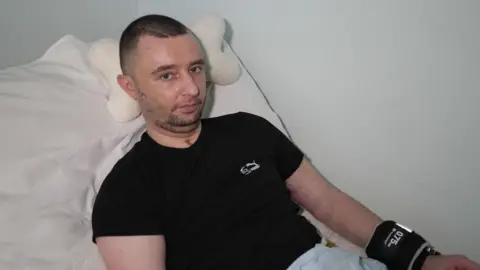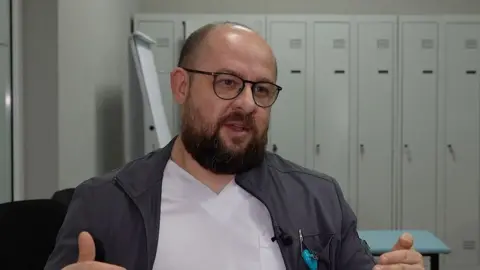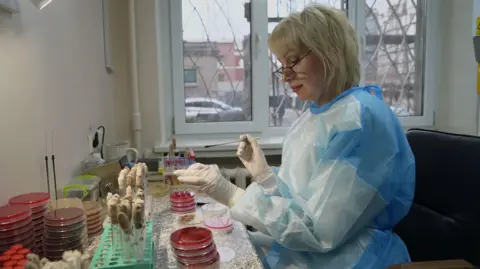Drug-resistant bacteria are spreading in Ukraine
 BBC
BBCWhen Pte Oleksander Bezverkhny walked into Feofania Hospital in Kiev, few believed he would live. The 27-year-old suffered a serious injury to his abdomen and his ankle fell on his fist. Both his legs were amputated.
Then doctors discovered that his infections were resistant to commonly used antibiotics – and the already difficult task of saving his life became hopeless.
Antimicrobial resistance (AMR) occurs when bacteria evolve and learn how to defend themselves against antibiotics and other drugs, rendering them ineffective.
Ukraine is far from the only country affected by this issue: in 2021, 1.4 million people worldwide will die of AMR infection, and in the UK, In 2023, there were 66,730 serious antibiotic-resistant infections. However, war seems to have accelerated the spread of the disease. Many resistant pathogens in Ukraine.
Clinics treating war casualties have reported a significant increase in AMR cases. More than 80% of patients admitted to Feofania Hospital have infections caused by microbes that are resistant to antibiotics, said Deputy Chief Physician Dr. Andrii Strokhan.
Surprisingly, antibiotic-resistant infections often originate from healthcare facilities.
Medical staff try to minimize the spread of these infections by following strict hygiene protocols and using protective equipment, but facilities can be overwhelmed by war-torn people.
Dr. Volodymyr Dubina, head of the Mechnikov Hospital’s ICU, said that since the Russian invasion, his department alone has increased the number of beds from 16 to 50. Levels are low.
Dr. Strachan explained that these factors can affect the spread of AMR bacteria. “There is one nurse who takes care of 15-20 patients in the operating room,” he said. “She can’t physically scrub her hands as much and as often as needed to avoid spreading the infection.”

The nature of this war meant that patients were more vulnerable to the disease than they would have been in peacetime. When a soldier is discharged for medical reasons, they often go through several different facilities, each with their own type of AMR. Although medical experts say that this is inevitable due to the scale of the war, it will worsen the spread of AMR infections.
This was the case for Pte Bezwerkny, who was treated in three different institutions before arriving at the hospital in Kiev. Unable to treat the infection with conventional medicine, his condition worsened and he developed sepsis five times.
This situation is different from other recent conflicts, such as the war in Afghanistan, where Western troops are stabilized in place and airlifted to a European clinic, rather than going through many different local facilities.

According to Dr. Dubina, a hospital in the frontline areas of the Dnipro neighborhood, this would not be possible in Ukraine, since there has not been an influx of patients since World War II. Once the patients are sufficiently stabilized, they are transferred to another clinic to free up capacity – if one has room.
“In terms of microbiological control, it means they (bacteria) will spread more. But if it’s not done, we can’t do it. Then it’s a disaster.”
With so many wounded, Ukraine’s hospitals can’t easily identify infected patients – which means more resistant and dangerous bacteria can spread unchecked.
The infections that cause the problem should be treated with a special antibiotic from the “reserve” list. But often the more quickly doctors prescribe these, the faster the bacteria adapt, making the antibiotics less effective.
“We need to balance our scales,” Dr. Strokan explains. “On the one hand, we must save the patient, on the other hand – we must not breed new microorganisms that are resistant to antibiotics.”

In Pte Bezwerkny’s case, doctors had to use very expensive antibiotics; These are volunteers from abroad. After a year in the hospital and more than 100 surgeries, his condition is not life-threatening.
Doctors were able to save his life. But as pathogens grow more resistant, the fight to save others becomes more difficult.


